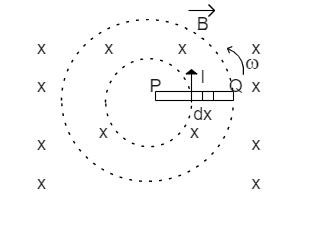Question
Question: A wheel has three spokes and in a uniform magnetic field perpendicular to its plane, with the axis o...
A wheel has three spokes and in a uniform magnetic field perpendicular to its plane, with the axis of rotation of the wheel parallel to the magnetic field. When the wheel rotates with a uniform angular velocity ω , the emf induced between the center and rim of the wheel is e , if another wheel having same radius but with six spokes is kept in the same field and rotated with a uniform angular velocity 2ω . The emf induced between the center and the rim will be :
A)e
B)2e
C)2e
D)4e
Solution
Spoke is one of some number of rods radiating from the center of a wheel. Spoke are connecting rods between bicycle hub and the rim the purpose of the spoke is to transfer the load between the hub and rim, spokes are made of steel and that steel may be a stainless steel or high carbon steel.
Complete step-by-step solution:
Faraday's law of induction which predicts how a magnetic field interacts with electric field to induce an electromotive force this phenomenon is known as electrometric induction. Electromagnetic induction principle is used in transformers, generators and many other devices.
Faraday’s first laws of electromagnetic induction states that when a conductor is rotating in a magnetic field an emf is induced in a circuit.
Faraday's second of electromagnetic induction states that the rate of change of flux linkages is equal to the induced emf
e=−NdtdQVolts
Negative sign represents the direction of the induced current and will be in the opposite direction.
Emf induced in a rotating conductor in uniform magnetic field

From the diagram you can see that uniform magnetic field(B) existing in opposite direction and rod PQ is rotating with an angular speed ω and we consider an element dx with velocity v
Motional emf induced in element dx is
de=Bvdx
Total emf induced across P and Q is
ePQ=∫de=0∫lB(xω)dx
ePQ=Bω[2x2]0l
ePQ=21Bωl2
The emf induced between the center and the rim will be
e=21BR2ω
∴ Emf induced is independent upon the number of spokes
Induced emf(e) is directly proportional to angular velocity(ω
e∝w
If the angular velocity is2ω then the emf induced will be2e
So option B is the correct answer.
Note: Student the emf induced between the center and the rim can be obtained by faraday's laws and also by motional emf. Emf induced is independent upon the number of spokes. The number of spokes may be 3 or else 6 and it depends upon the velocity .Lighter wheel performances better than the stronger wheel.
